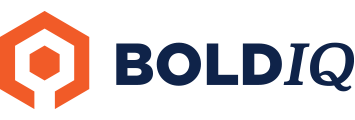How the Transportation Industry Can Do More with Less A BoldIQ byline in Mass Transit
As if our roads aren’t cluttered enough, a report from the International Energy Agency projects there will be 1.7 billion vehicles on the road by 2035 – double the current number. Not only does this mean highly congested streets, but it also means an unhealthy increase in emissions and pollution. (Even if we move to electric vehicles, there is still maintenance, oils, paint, manufacturing, and more). Transportation accounts for 20 percent of the world’s energy consumption, leaving the transportation industry under increased pressure to operate more efficiently with fewer resources, while still having to meet the growing demand.
It seems that demand for transport continues to grow hand in hand with the outcry to reduce the number of cars owned by people. Thus the advent of so-called “on demand app based” series such as Uber and Lyft. However, these are simply less than efficient additions to our streets, creating yet another layer of congestion and inefficiency. While they may be very flexible for the passengers, they are adding multiple vehicles to the streets that significantly surpass demand – but I will not be discussing these services in this post.
On the other hand, public transportation departments seem to be facing ongoing budget cuts and their immediate and understandable response is to cut services. In the Seattle area for example, bus services will be reduced by 16 percent due to so-called budget cuts. While it would seem that service cuts are the only remedy for budget cuts, this is an antiquated thought process and these days, simply wrong. Transportation agencies should be continuously finding ways to provide more service with less budget as opposed to wait for a budget cut and simply cut service as a reaction. And with sophisticated optimization technology readily available, this is doable.
Operations optimization technologies are already transforming the way other industries are managing their resources. Take the aviation industry as an example. Airlines are using optimization technology to manage large fleets of planes and staff amidst constant complex planning requirements, unpredictable disruptions due to weather, mechanical failures and staff illness. In an optimized system, resources are more efficiently managed to maximize potential revenue, maximize productivity of pilots and crew, minimize fuel costs and waste, all while providing superior service to their customers. And they do this in real-time, all the time.
Imagine the possibilities for fleets of taxis, buses and other ride-sharing services. With real-time optimization, these transportation services would be able to work efficiently to not only meet demand, but to also improve congestion on the streets and reduce fuel consumption and emissions. Think of how much fuel taxis and ride-sharing services burn driving around looking for their next customer. Through an optimized “central nervous system,” these drivers could receive the best fitting on-the-spot assignments in real time. This provides value not only to the driver and passenger, but to the network as a whole.
According to Robert Burn, “The best laid plans of mice and men often go awry.” No matter how well-planned long-term and short-term scenarios are, disruptions and changes will always occur – be it machines breaking down, a change in weather or even a changed requirement or deadline from a customer.
The U.S. has the largest transportation system in the world. It serves over 300 million people and 7.5 million businesses. It shouldn’t be managed by antiquated technology (if using technology at all) as it largely is today. The transportation industry must rethink its approach to operations and resource management.
The future of transportation will be centered on efficiency. Let’s stop waiting for the future to arrive. We have the technology at our fingertips to make the best possible transportation decisions when it counts most – right now.



